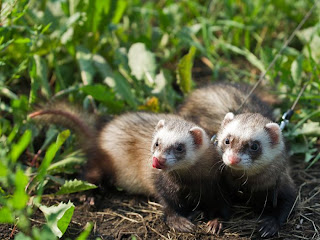Beauty Of Animal | Red Squirrel | The red squirrel is somewhat smaller than the eastern grey squirrel which has a head-and-body length of 25 to 30 cm (9.5 to 12 in) and weighs between 400 and 800 g (14 oz to 1.8 lb) The coat of the red squirrel varies in colour with time of year and location. There are several different coat colour morphs ranging from black to red. The underside of the squirrel is always white-cream in colour. The red squirrel sheds its coat twice a year, switching from a thinner summer coat to a thicker, darker winter coat with noticeably larger ear-tufts (a prominent distinguishing feature of this species) between August and November. A lighter, redder overall coat colour, along with the larger ear-tufts (in adults) and much smaller size, distinguish the Eurasian red squirrel from the American eastern grey squirrel.
The red squirrel, like most tree squirrels, has sharp, curved claws to enable it to climb and descend broad tree trunks, thin branches and even house walls. Its strong hind legs enable it to leap gaps between trees.The red squirrel also has the ability to swim.
Usually multiple males will chase a single female until the dominant male, usually the largest in the group, mates with the female. Males and females will mate multiple times with many partners. Females must reach a minimum body mass before they enter œstrus, and heavy females on average produce more young.
breeding may be delayed. Typically a female will produce her first litter in her
breeding may be delayed. Typically a female will produce her first litter in her
Ecology and behaviour
The red squirrel is found in both coniferous forest and temperate broadleaf woodlands. The red squirrel is a solitary animal and is shy and reluctant to share food with others. However, outside the breeding season and particularly in winter, several red squirrels may share a drey to keep warm. The active period for the red squirrel is in the morning and in the late afternoon and evening. . The red fox, cats and dogs can prey upon the red squirrel when it is on the ground. Humans influence the population size and mortality of the red squirrel by destroying or altering habitats, by causing road casualties, and by controlling populations of grey squirrels.
The red squirrel is found in both coniferous forest and temperate broadleaf woodlands. The red squirrel is a solitary animal and is shy and reluctant to share food with others. However, outside the breeding season and particularly in winter, several red squirrels may share a drey to keep warm. The active period for the red squirrel is in the morning and in the late afternoon and evening. . The red fox, cats and dogs can prey upon the red squirrel when it is on the ground. Humans influence the population size and mortality of the red squirrel by destroying or altering habitats, by causing road casualties, and by controlling populations of grey squirrels.
The red squirrel is protected in most of Europe, as it is listed in Appendix III of the Bern Convention; it is listed as Least Concern on the IUCN Red List. Eradication of the grey squirrel from the North Wales Island of Anglesey began in January 1998. This facilitated the natural recovery of the small remnant red squirrel population and was followed by the successful reintroduction of the red squirrel into the pine stands of Newborough Forest. Subsequent reintroductions into broadleaved woodland followed and today the island has the single largest red squirrel population in Wales. Brownsea Island in Poole Harbour is also populated by exclusively red squirrels (approximately 200 individuals).
Mainland initiatives in Southern Scotland and the North of England also rely upon grey squirrel control as the cornerstone of red squirrel conservation strategy. This programme is administered by the Grampian Squirrel Society, with an aim of protecting the red squirrel; the programme centres on the Banchory and Cults areas. In 2008, the Scottish Wildlife Trust announced a four year project which commenced in the spring of 2009 called "Saving Scotland's Red Squirrels" A significant drop in red squirrel populations in the area has been observed since 1970, and it is feared that the eastern grey squirrel may expand into the rest of Europe.
Find Here The Kinds Of Animals and Flora and Fauna





















































